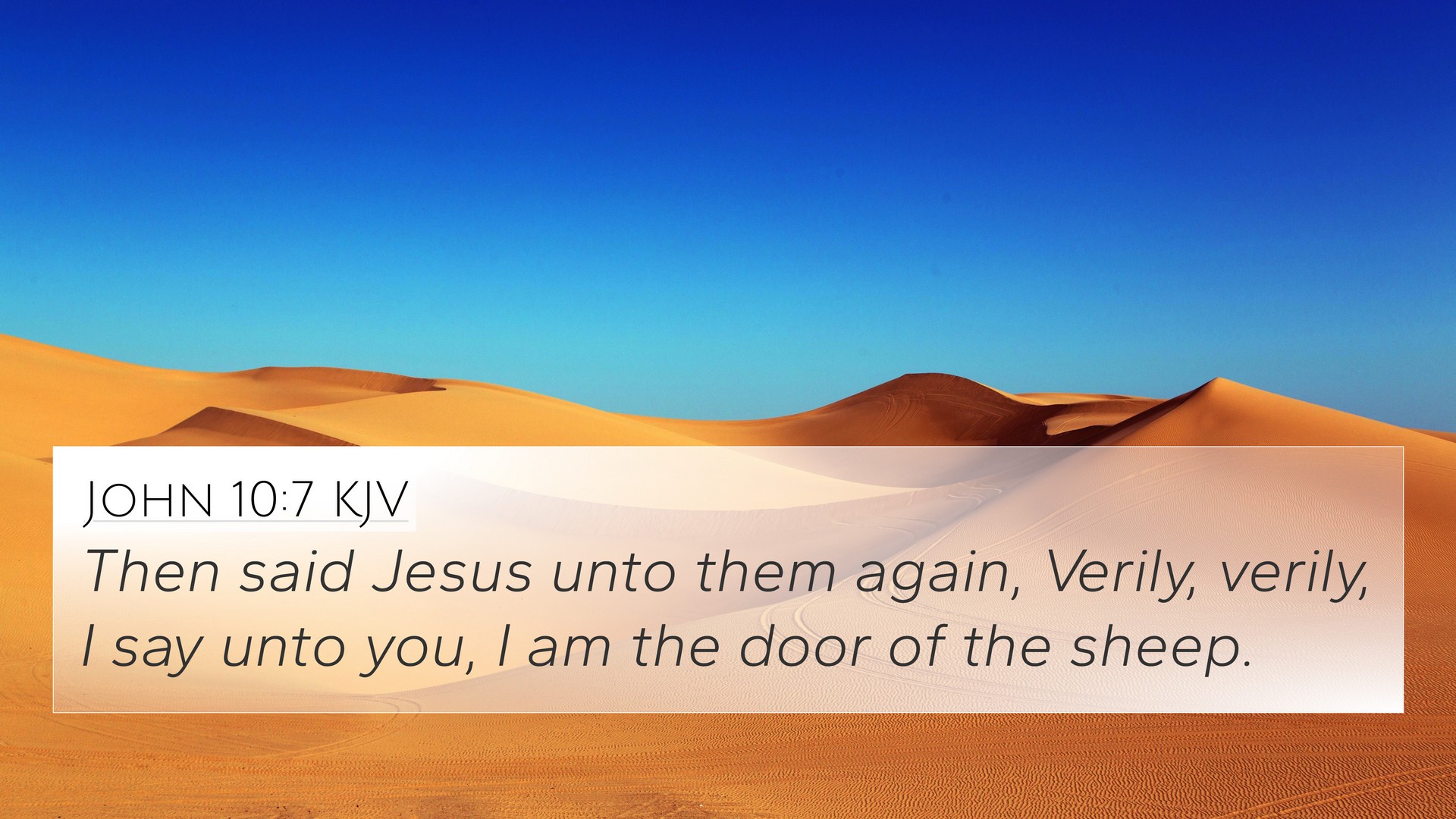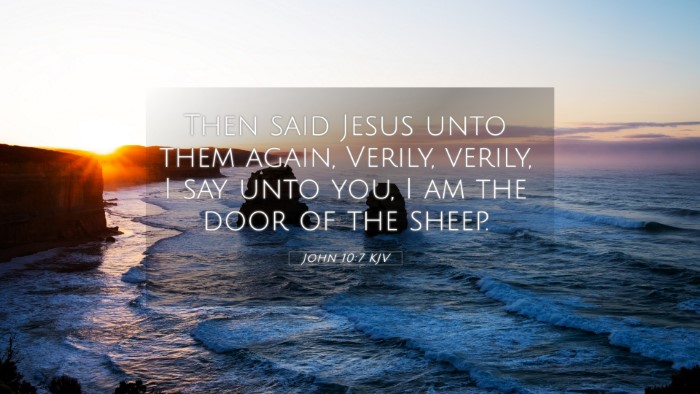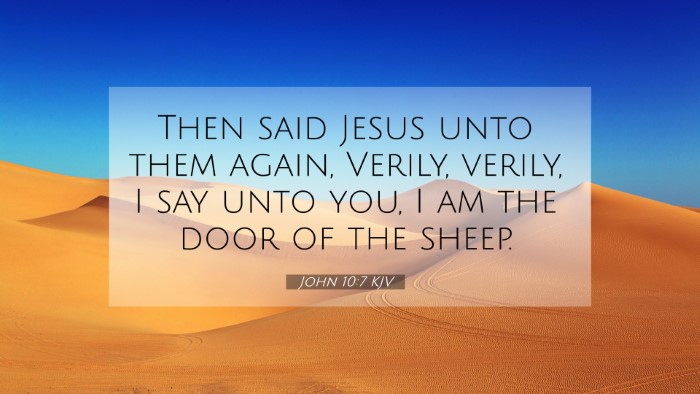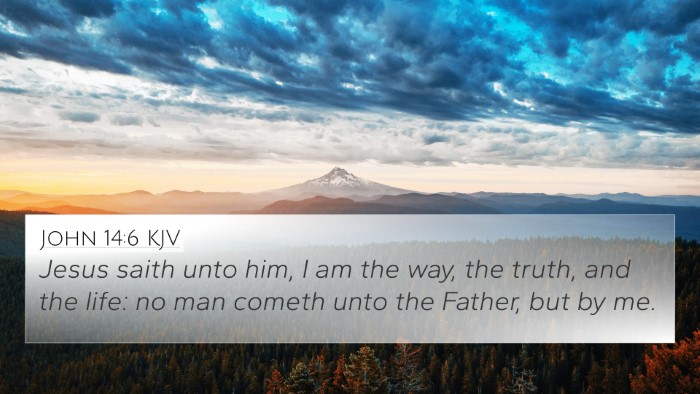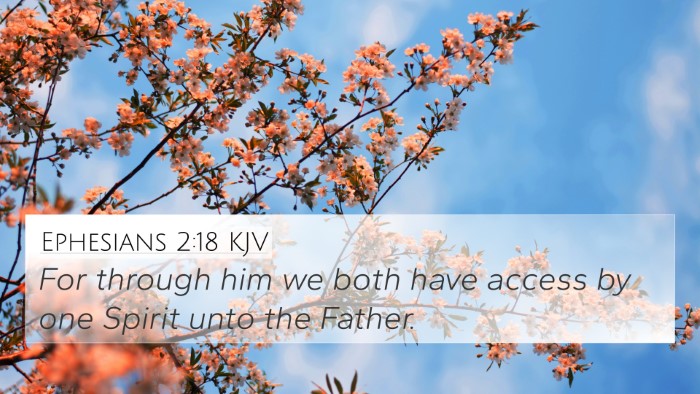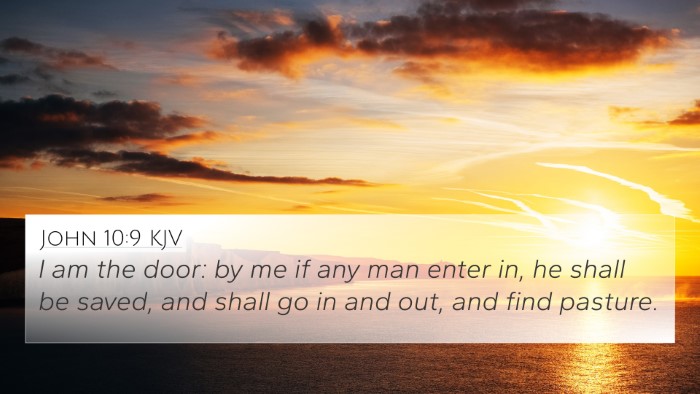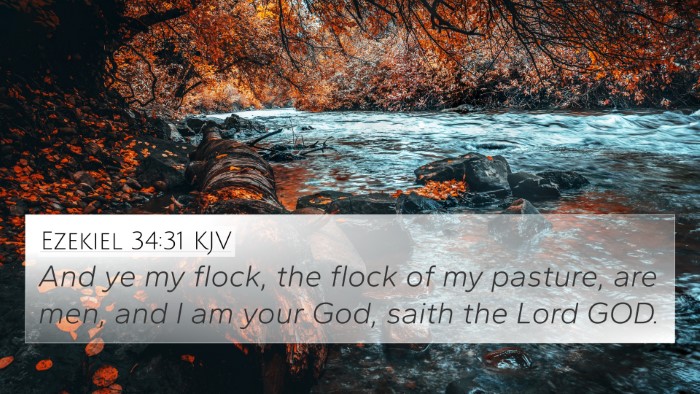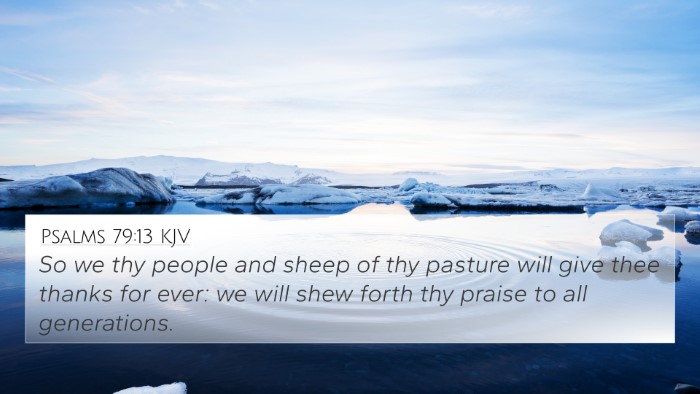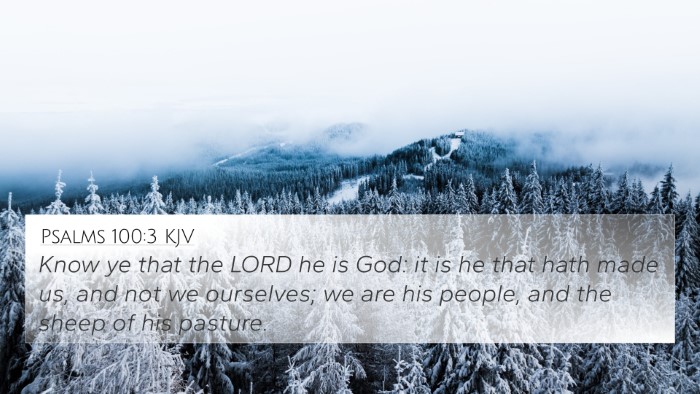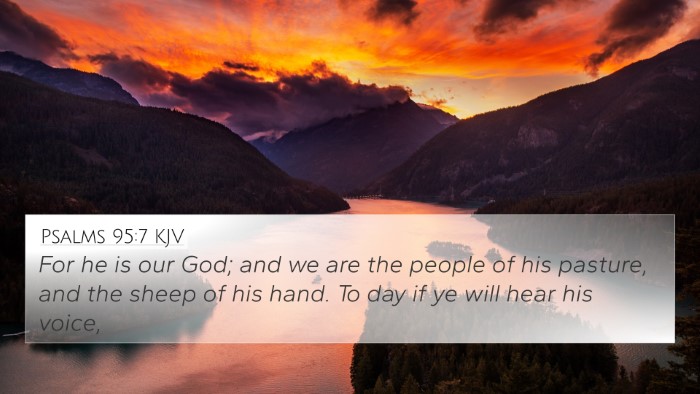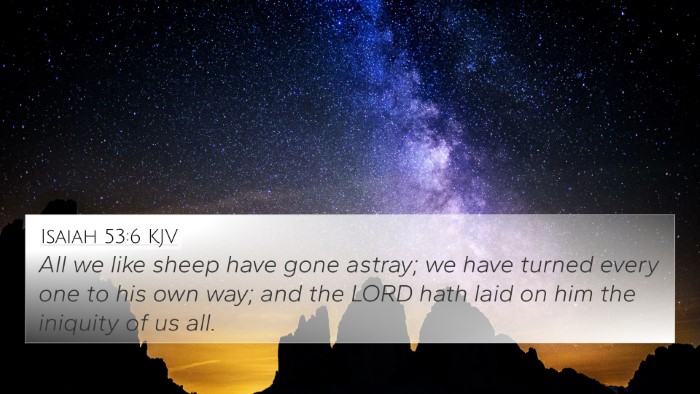Understanding John 10:7
In John 10:7, Jesus makes a profound declaration, saying, “I am the door of the sheep.” This verse serves as a pivotal point in understanding His role as protector and provider for His followers. Below is a synthesis of insights collected from notable public domain commentaries, specifically those of Matthew Henry, Albert Barnes, and Adam Clarke.
Verse Context
Jesus speaks these words to illustrate the relationship between Himself and His followers, likening Himself to a door through which the sheep enter for safety and sustenance. This metaphor emphasizes His unique role in spiritual salvation and guidance.
Insight from Commentaries
-
Matthew Henry:
Henry observes that the imagery of a door signifies not only safety but also the means of access to spiritual pastures. The sheep’s reliance on the door underscores their need for guidance and protection.
-
Albert Barnes:
Barnes emphasizes that Jesus as the door represents the exclusive path to salvation. He connects this idea to the concept of Christ as the only means through which one's spiritual needs can be met.
-
Adam Clarke:
Clarke expands on the idea that Jesus as the door implies His openness to all who seek Him. He points out that there is a communal aspect where the sheep reflect the collective body of believers entering through Christ.
Thematic Connections
The verse invites us to explore various cross-references within the Bible that deepen our understanding of Jesus as the door. Notably, it aligns with the following verses:
- John 10:9: "I am the door: by me if any man enter in, he shall be saved."
- Acts 4:12: "Neither is there salvation in any other: for there is none other name under heaven given among men, whereby we must be saved."
- Hebrews 10:19-20: "Having therefore, brethren, boldness to enter into the holiest by the blood of Jesus, by a new and living way, which he hath consecrated for us, through the veil, that is to say, his flesh."
- 1 Peter 2:25: "For ye were as sheep going astray; but are now returned unto the Shepherd and Bishop of your souls."
- Revelation 3:20: "Behold, I stand at the door, and knock: if any man hear my voice, and open the door, I will come in to him, and will sup with him, and he with me."
- Matthew 7:13-14: "Enter ye in at the strait gate: for wide is the gate, and broad is the way, that leadeth to destruction."
- Isaiah 40:11: "He shall feed his flock like a shepherd: he shall gather the lambs with his arm, and carry them in his bosom."
Inter-Biblical Dialogue
Exploring John 10:7 provides rich insights into the broader biblical narrative. It reflects on how Old Testament themes of shepherding transition into the New Testament revelation of Christ. In doing so, we uncover a comprehensive understanding of spiritual guidance, protection, and the nature of salvation through Christ's redemptive work.
Cross-Referencing Bible Texts
For further study, cross-reference the above verses to see thematic links that reveal God's plan for humanity. Tools for Bible cross-referencing might include a Bible concordance or a Bible reference guide. These resources enhance our understanding of connections between biblical texts, facilitating deeper scripture study.
Conclusion
In conclusion, John 10:7 not only presents Christ as the door leading to life but also to a broader understanding of his role in the narrative of salvation. By utilizing cross-referencing Bible study methods, believers can deepen their comprehension of scripture, enriching their spiritual journey through identified Bible verse connections.
Exploring Cross-References
For those asking the question, “What verses are related to John 10:7?” or “Find cross-references for John 10:7,” the aforementioned scriptures provide a solid foundation. Identifying connections such as these is essential in studying scripture profoundly and preparing for Biblical discussions or sermons.
